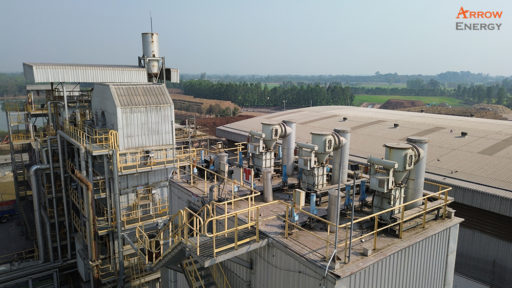Electrostatic Precipitators (ESPs) are widely recognized as efficient air pollution control devices used in various industries. These devices rely on discharge electrodes to remove particulate matter from exhaust gases, improving air quality and reducing emissions. In this article, we will explore the significance of discharge electrodes in ESPs and their vital role in the process of electrostatic precipitation. We will also discuss the benefits of well-designed discharge electrodes and their impact on the overall performance of ESP systems.

Understanding Electrostatic Precipitators:
Electrostatic Precipitators (ESPs) are air pollution control devices designed to capture and remove particulate matter from industrial exhaust gases. They operate on the principle of electrostatic precipitation, which involves the ionization of particles and their subsequent collection on charged surfaces. ESPs consist of several components, with discharge electrodes being a critical element in the particle collection process.
The Role of Discharge Electrodes:
Discharge electrodes, also known as emitting electrodes or corona wires, are essential components in ESPs. Their primary function is to create and maintain a corona discharge, generating ions in the vicinity of the collecting surfaces. These ions charge the particles in the gas stream, enabling their attraction to the oppositely charged collection surfaces, such as plates or tubes, for subsequent removal.
Design Considerations for Discharge Electrodes:
Well-designed discharge electrodes are crucial for the optimal performance of ESPs. Consider the following design factors:
a. Material Selection: Discharge electrodes are typically made of high-quality materials that can withstand the harsh operating conditions within the ESP. Stainless steel and tungsten are commonly used due to their durability and resistance to corrosion.
b. Wire Diameter and Tension: The diameter and tension of discharge electrodes affect the intensity of the corona discharge. Proper selection of wire diameter and tension ensures uniform ionization and particle charging, maximizing collection efficiency.
c. Electrode Configuration: The arrangement and spacing of discharge electrodes impact the distribution of the corona discharge. An appropriate electrode configuration promotes an even distribution of ions, ensuring effective particle charging across the collection surfaces.
Benefits of Effective Discharge Electrodes:
Well-designed and maintained discharge electrodes offer several benefits in ESP systems:
a. Efficient Particle Charging: Effective discharge electrodes create a robust corona discharge, resulting in efficient particle charging. This enhances the ESP's ability to capture a wide range of particulate matter, including fine and ultrafine particles.
b. High Collection Efficiency: Properly charged particles adhere to the collection surfaces more effectively, improving collection efficiency and reducing emissions.
c. Reduced Energy Consumption: By ensuring efficient particle charging, well-designed discharge electrodes minimize power requirements for ionization, leading to lower energy consumption.
d. Extended Equipment Lifespan: When discharge electrodes are properly maintained, they contribute to the longevity of ESP systems by preventing issues such as sparkovers, wire breakage, and excessive corrosion.
Visit Here For More Information About This ;- Air preheater tubes.
Discharge electrodes are essential components in Electrostatic Precipitators (ESPs) that enable efficient particle charging and removal. Their proper design and maintenance significantly impact the overall performance of ESP systems, resulting in improved air quality and reduced emissions. By investing in high-quality discharge electrodes and adhering to regular maintenance practices, industries can achieve higher collection efficiencies, lower energy consumption, and extended equipment lifespans. The continuous advancement of discharge electrode technology contributes to the evolution of ESPs as highly effective air pollution control devices, ensuring cleaner and healthier environments for all.





Comments